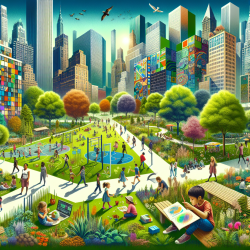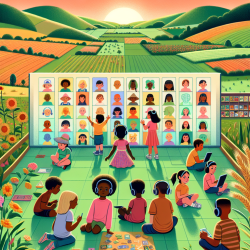Introduction
In recent years, the relationship between urban green spaces and mental health has gained significant attention. The research paper titled How Does Urban Green Space Impact Residents’ Mental Health: A Literature Review of Mediators provides a comprehensive overview of how urban green spaces affect mental health through various mediators. This blog aims to translate these findings into actionable insights for practitioners working with children, particularly those involved in online therapy services like TinyEYE.
Key Findings from the Research
The research identifies three primary mediators through which urban green spaces impact mental health: environmental factors, outdoor activity, and social cohesion. These mediators are crucial in understanding how green spaces can be leveraged to improve mental health outcomes in children.
- Environmental Factors: Green spaces improve air quality, reduce noise pollution, and provide visual stimuli, all of which contribute to reducing stress and enhancing mental health.
- Outdoor Activity: Access to green spaces encourages physical activity, which is associated with reduced stress and improved mood.
- Social Cohesion: Green spaces foster a sense of community and belonging, which can enhance mental well-being.
Implications for Practitioners
For practitioners, especially those involved in speech-language pathology and online therapy, integrating these findings into practice can enhance therapeutic outcomes. Here are some strategies:
- Incorporate Nature-Based Activities: Encourage children to engage in outdoor activities in green spaces. This can be part of therapy sessions or recommended as homework. Activities like nature walks or outdoor games can be beneficial.
- Virtual Green Space Exposure: For online therapy, consider using virtual backgrounds of green spaces or incorporating videos of nature scenes during sessions. This can simulate the calming effects of real green spaces.
- Promote Community Engagement: Encourage participation in community activities held in green spaces. This not only enhances social cohesion but also provides opportunities for children to practice social skills in a natural setting.
Encouraging Further Research
While the current research provides valuable insights, there is a need for further studies focusing specifically on children and the unique ways they interact with green spaces. Practitioners are encouraged to contribute to this growing field by documenting their observations and outcomes when integrating green space activities into their therapeutic practices.
Conclusion
Urban green spaces offer a promising avenue for enhancing mental health outcomes in children. By understanding and utilizing the mediators identified in the research, practitioners can create more effective and engaging therapeutic experiences. For those interested in exploring this topic further, I highly recommend reading the original research paper, which provides a detailed analysis of the mediators and their impact on mental health.










